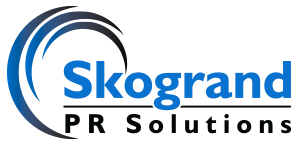Photo by Kate Trifo on Unsplash
Guest post by Kristina Wright
Businesses across the state of Minnesota – and in fact, most states across the country – are starting to emerge from roughly eight weeks of stay-at-home orders. During the past two months, companies have had to fundamentally shift how they do business, which will result in significant changes for many when we arrive on the other side of the COVID-19 pandemic.
Businesses are sketching out plans for a new normal. However, it’s challenging because we don’t have all the factors. Our current situation is continually changing. And unlike other business continuity scenarios, there’s no playbook or best practices to learn from or to build upon what we did last time.
Depending on the type of business and the work that you do, the new reality could potentially look very different. And any time a business makes a change in policy, practice or procedure, it must be communicated clearly and concisely to employees.
SHARING THE ‘WHY’ BEHIND BUSINESS DECISIONS
Whether your employees will return to the office in the next week or next month, or if you’ve pushed that decision out until the end of the summer, what and how you communicate to your employees will be critical.
Beware of gaps in messaging or unanswered questions; this leads to speculation. That’s where the rumor mill begins. People talk. They will fill in the blanks on their own.
Consider the range of scenarios that arise regarding work-from-home:
- Some employees have loved the shift to work-from-home and don’t want to come back to an office setting. Ever.
- Some can’t stand working from home. There are too many distractions (children, pets, spouses, tasks and laundry!).
- Some need structure and don’t feel effective working from home. They’re isolated and they miss the face-to-face connection with their team members.
- Some feel they’ve proven they are capable of working from home and, moving forward, will want the flexibility to choose a schedule that incorporates both.
In addition, businesses will have to make countless other decisions that will need to be explained to employees – not just the “what” but the “why” as well. Decisions on masks, customer interactions, proximity of cubicles, sanitizing procedures, sick pay … the list goes on and on. …
And those are just the near-term decisions!
REPRIORITIZING STRATEGY
As companies are making day-to-day business continuity decisions, they are also thinking long term. How will the last two months – and the next six months?! – change their plans and projections for 2020? What is the ripple effect that they will experience in the next year, two years and beyond?
Most companies will need to pivot on at least some of their strategies and reprioritize for the rest of the year. These revisions may include major changes to the strategic direction that was set forth at the beginning of the year. All of these situations and scenarios create a need to communicate with employees.
EMPLOYEE COMMUNICATIONS
Don’t skimp on this part!! Do it right.
Vary your platform. Leverage your senior leaders. Maintain a consistent message. And above all else, be clear. This is an uncertain time for everyone. Employees need to trust that their leaders are continually working to understand this new environment and to see that their organization is responsive and nimble in making changes.
- Communicate often. If possible, maintain a regular cadence. (Recommendation: at least weekly, especially during these times.) You don’t want to get in the habit of communicating only when there’s “something big” to share.
- Say “I don’t know.” There’s a lot that is changing right now. Leaders don’t have to know everything! Just keep working on it and be sure to give an update when it becomes clearer.
- Share the good & the bad. We are in uncharted waters. You will make decisions that bomb. Circumstances will change that will require you to reverse course on a decision you made just weeks ago. It’s OK – and more than OK, it’s critical – to share these moments with employees. Announce the change, explain the why, and move forward. Sharing the good and bad leads to transparency and trust. It allows everyone to know and feel that we’re in this together.
- Ask employees their opinion. And don’t just ask for it, but actually listen. Give consideration to what your employees are saying. As a leader, you have one viewpoint of how the last few months have gone. That viewpoint, however, can be vastly different than an employee on the front lines or an accountant in the back office. Ask what they think, what they’ve learned, what’s the good and bad of the past few months.
- Gather future insights. For leaders who have the courage, ask employees where they see the company headed. Ask them to make predictions on how the last two months will change the business in the future. What predictions do they have about the next six months? What ideas do they have to make improvements as we embrace the new normal? It’s vulnerable to tell employees you don’t have all the answers.
The coming weeks and months will be filled with unknowns. It doesn’t make leaders weak to say that to their employees. It actually adds to their strength and credibility. Lead with integrity, make the best decisions you can based on the situation you’re in and the information you have, and clearly communicate with employees along the way. Businesses can and will emerge from this time stronger and more unified.
KRISTINA WRIGHT is a strategic writer and corporate communications professional who focuses on effectively leveraging communications to create clarity within organizations. She works with leadership teams on employee communications, organizational messaging and positioning, quarterly webinars, presentations, talking points and strategic plans. In her work, Kristina straddles the fence between strategy and execution, ensuring a long-term focus on initiatives while rolling up her sleeves to get the work done. She excels in simplifying and sharing complex information so that it is easily understood and adapted for diverse audiences.

